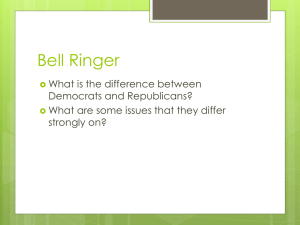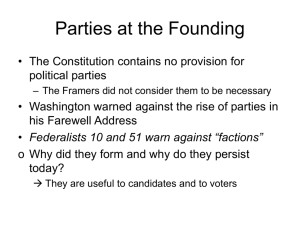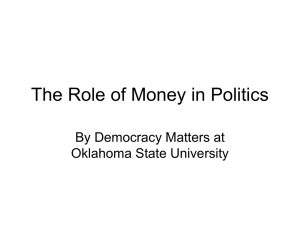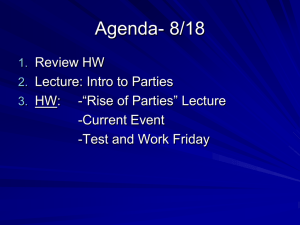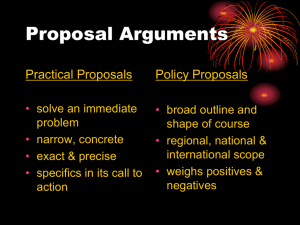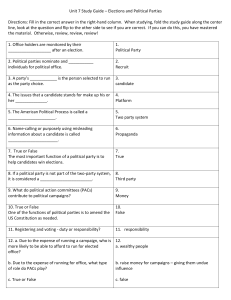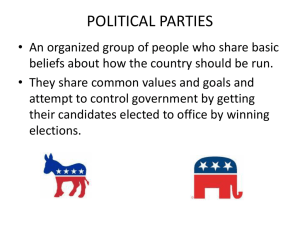Political Parties Today - University of San Diego Home Pages
advertisement
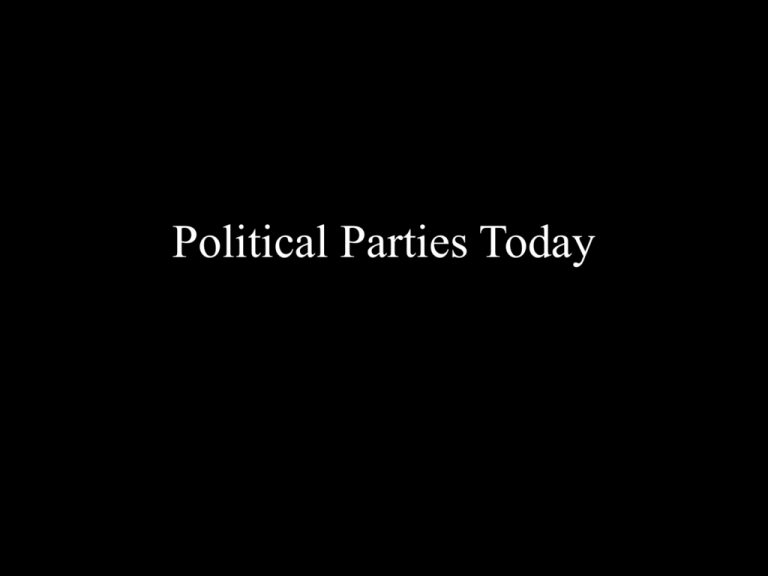
Political Parties Today The party’s task: • Party: a group of people who try to control government policy by fielding candidates for elective office • The party’s goal: winning elections • Party organizations exist to solve collective action problems, specifically voters’ free rider problem • Party organizations themselves are subject to the free rider problem!!! Selective incentives that can be offered to party workers • Material • Solidary • Expressive/Purposive How have the selective incentives available to the parties changed over time? Spoils System party organizations • Decentralized • Effective, Manpower-based organizations • More pragmatic Questions about Parties today • • • • Who works for the parties today? Why do they do it? What do they contribute? How do parties mobilize voters and win elections? Comparison of early and modern parties 19th century parties 21st century parties • Decentralized • More centralized • Manpower org’s • Expertise/service orgs • Pragmatic • More ideological National party structure • National party committee (DNC, RNC) • Separate state organizations • Hill committees – – – – National Republican Senatorial Committee (NRSC) National Republican Congressional Committee (NRCC) Democratic Senatorial Campaign Committee (DSCC) Democratic Congressional Campaign Committee (DCCC) Finance Restrictions • Raising Money • Individual Contributions to state, district and local party committees - $10,000 • Individual Contributions to national party committees - $25,000 per year • PAC contributions to national committees $15,000 per year Finance Restrictions • Spending Money: • Limit of $5000 to House candidates • Limit of $35,000 to Senate candidates • Coordinated expenditures: ~$30,000 House, ~$60,000 Senate (varies with population), ~$16 million Presidential • Unlimited independent expenditures – cannot coordinate any aspect of the timing, content, placement or use of these expenditures with their candidates What does that add up to?? Ad-hoc organizations • • • • • No unified set of priorities Party “stands” controlled by the candidates Platform not binding on elected officials No top down control Local organizations controlled by part time volunteers with little training and varied skill Why so disorganized? • • • • • • Election orientation Federalism Separation of Powers Primaries Election of party officials Campaign finance laws Party features • Prominent in voters’ decisionmaking • Candidates seek their brand identification • Decentralized organizations • Loose coalitions So how might we expect political parties to behave in this year’s midterm elections? Where will we see their effects?


